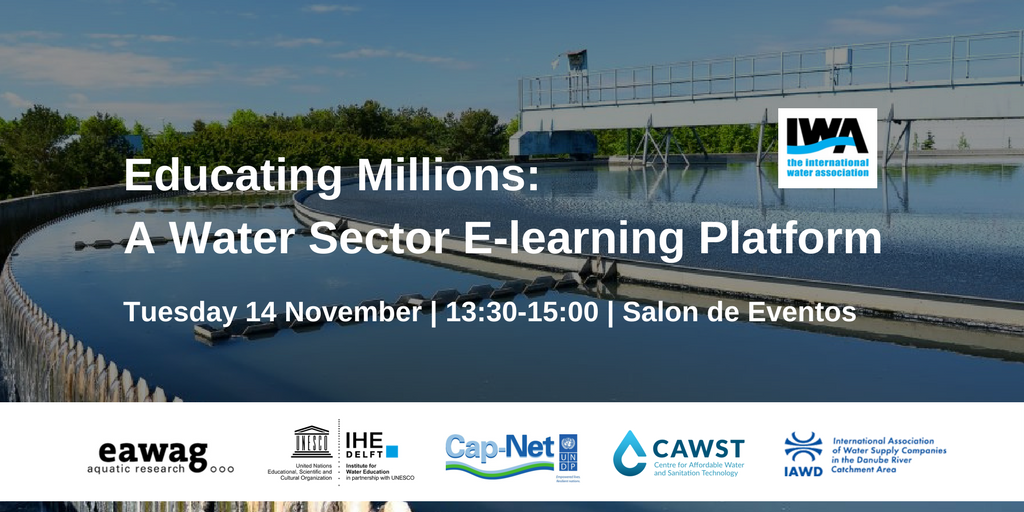Collaborate or Fail: Reaching Millions to Address Sanitation Capacity Gaps
Have you ever wondered about what it takes for you to be able flush a toilet? It seems the most normal thing in the world. I do it several times a day with barely a thought. Yet when it comes to toilets and sanitation, ‘normal’ really depends on where you live in the world. In many countries, what I take for granted is well beyond the reach of most people. For literally billions of people in the world, the reality is that untreated wastewater flows directly into rivers, lakes or the ocean, where it creates environmental and health risks. For many people, open defecation is the daily reality.
I have to be honest, before I started working in the water sector, I was clueless about the amount of work required to have a toilet; or what it took ensure that the waste water is appropriately treated to be released safely into the environment. The big question now is, how do we ensure those without proper sanitation services can have them? Do we have the capacity, the actual professional capacity in terms of numbers and competences, to deliver the ambitious goal of universal access?
Research conducted by the IWA in 2014, before the adoption of the Sustainable Development Goals, highlighted the need to attract, educate, train and professionally update 700,000 new sanitation professionals to reach universal coverage[1] in low- and middle-income countries.
Most professionals in these countries are needed in technical fields to construct, run and maintain the additional infrastructure required. Their knowledge and skills will need to be fully updated to meet the requirements of construction and maintenance, but may not need a higher level of education in the sanitation field. There is also high demand in management, business and operational personnel who will deliver the sustainability of the systems, and who need a good national and regional understanding of the sector.
The research highlighted the need to have specialists who innovate new designs, low cost technologies, and deliver the appropriate systems for specific circumstances. Typically these are professionals such as technicians or engineers. The area that was identified with least need was in community mobilisation, including health workers, sociologists, and community mobilisers, who require a basic understanding of the technologies used in their field.
The gap in 2014 was 700,000 individuals, but that gap has widened with the adoption of the Sustainable Development Goals. Looking in depth at just two of the SDG targets, really highlights the immensity of our professional capacity needs.
Ending open defecation, which affects a little under a billion people, by 2030 requires an estimated 77,000 new personnel per year. Whereas, to halve the proportion of wastewater going untreated in waterways is estimated to require nearly ten times that number of new water professionals. Namely, some 80 percent of all the world’s domestic wastewater is untreated, and by 2030 there will be around 8.5 billion people living on the planet. This means that 3.4 billion people need to be connected to wastewater treatment by 2030. Over the next 13 years, or 4745 days, approximately 717.000 need to be connected to sanitation systems each and every day. This is a colossal ambition that requires unprecedented efforts. Most importantly it requires the human resources capable of reaching this goal, and it needs those people urgently.
I came to the conclusion that we need millions of new professionals in a diverse number of fields, and to provide them with appropriate training, education and experience. We have reached an inflection point in how education for sanitation will be organised in the decades to come. Get it wrong now and everything else will be unachievable.
All capacity development providers, whether universities, training organisations, NGOs, utilities or industry, have a role to play at international and national levels. It’s important that their efforts avoid duplication, that they share resources and make training more widely available, and that they collaborate to identify the gaps and right actors to address those gaps. A starting point is a platform for all actors to come together to share formal and informal training and education opportunities, and efforts are made to bring together capacity development providers globally to discuss collaboration and coordination.
Only through this collaborative approach can we achieve the capacity to reach the Sustainable Development Goals’ vision of universal access for all.
__________________________________________________________________________________
IWA’s Learning Hub for the water sector currently includes onsite training, massive open online courses (MOOCs), Small Private Online Courses (SPOCs), self paced online courses and webinars. In the near future the learning hub will expand its services to include postgraduate degrees and Learning Resources. www.iwa-network.org/iwa-learn.
IWA will continue to work with key partners to develop the concept of the learning hub using your provided inputs, and will present and discuss a roadmap towards this development at the IWA Water and Development Congress by hosting a session on Tuesday from 13.30-15.00:
Educating the Millions: a Water Sector E-Learning Platform
[1] Averaged from IWA HRCG study (2014) over the number of developing countries


